How Mobile Developers Make Money from Free Apps

Both the usage of mobile devices and the global application economy keep growing. Only during the 3rd quarter of 2019, downloads across Google Play and Apple App Store totaled 29.6 billion. Consumers spent almost $22 billion, which is nearly 23% more than the same period in 2018.
As of December 2019, 90.8% of iOS and 96.2% of Android apps were free to download. You will hardly find a paid app neither among the most downloaded nor top-grossing products. Obviously, there are monetization strategies that profit apps and games much better than charging for downloads upfront.
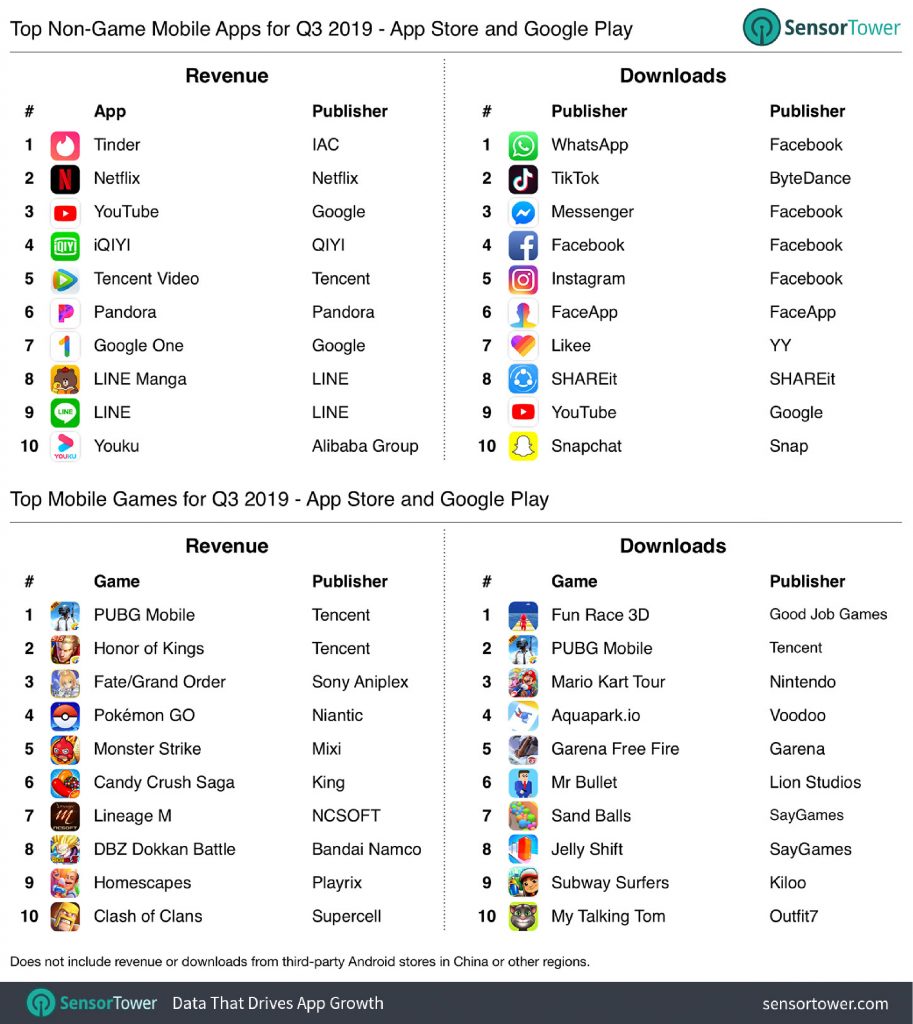
But how do free apps make money? In this post, we’ll review both the popular methods and those you might never think of. If you are toying with an idea of a new product, or need to boost your existing app revenue, you might gain insights into how to monetize it best.
5 Primary Ways to Make Money from Free Apps
1. Advertising
In February 2019, PubMatic’s study revealed that media buyers were allocating 45% of their digital advertising budgets to mobile platforms. 56% of respondents believed that programmatic in-app advertising delivered better audience targeting, and 54% reported more effective customer engagement than with other forms of advertising. For mobile app developers, ads are the most common and easiest way to earn money from free apps. All they need is to display embedded commercials within their product and receive payments from a third-party ad network.
There are five types of mobile advertising:
1) Native ads
Native ads are so naturally integrated into an app experience that users hardly perceive them as ads. For example, Snapchat’s sponsored lenses and branded filters are fun. Usually, native ads appear in threads as sponsored content or videos. They may target users based on their past actions, interests, locations, and other data, and align with the user’s favorite types of content. Since native ads are the least irritating and intrusive form in terms of user experience, they make one of the most efficient revenue streams.
2) Interstitial ads
These pop-ups take a whole screen, are displayed periodically, and can be closed by tapping the cross button or by opening the promoted page. Interstitial ads often occur at natural transition breaks in messaging, news, and content, or when users open or close the app. In gaming apps, they may appear before or after an expected content or functionality, e.g., changing game levels or between game sessions.
Static full-screen ads and ‘rich media ads’ that reach out to users through audio, video, and text are regarded as the least successful form of mobile advertising.
3) Banners
Banners/display ads of different sizes are typically displayed at the top or bottom part of the screen. Users can keep using the app even with a banner on the screen, but they are still annoying. The usefulness of banners has diminished since consumers have become increasingly conscious of user experience (UX) and user interface (UI) design. Moreover, they have low click-through rates.
4) In-app/in-stream video ads
Video ads lasting 10-30 seconds play automatically during natural pauses in the app experience or on-demand. The latter case is called a rewarded video. It plays in exchange for some in-app perks, such as extra points, bonuses, lives, or additional features. Since it is a win-win situation both for advertisers and users, rewarded videos are considered to be the most lucrative ad type.
5) Incentivized ads
These tools allow rewarding users for specific in-app actions, such as ad interactions, filling out a sponsored survey, or content sharing. Incentivized ads may enable users to unlock additional functionalities as well. The strategy allows creating better app engagement and loyalty, and most people interacting with such ads pay attention to the brand behind it.
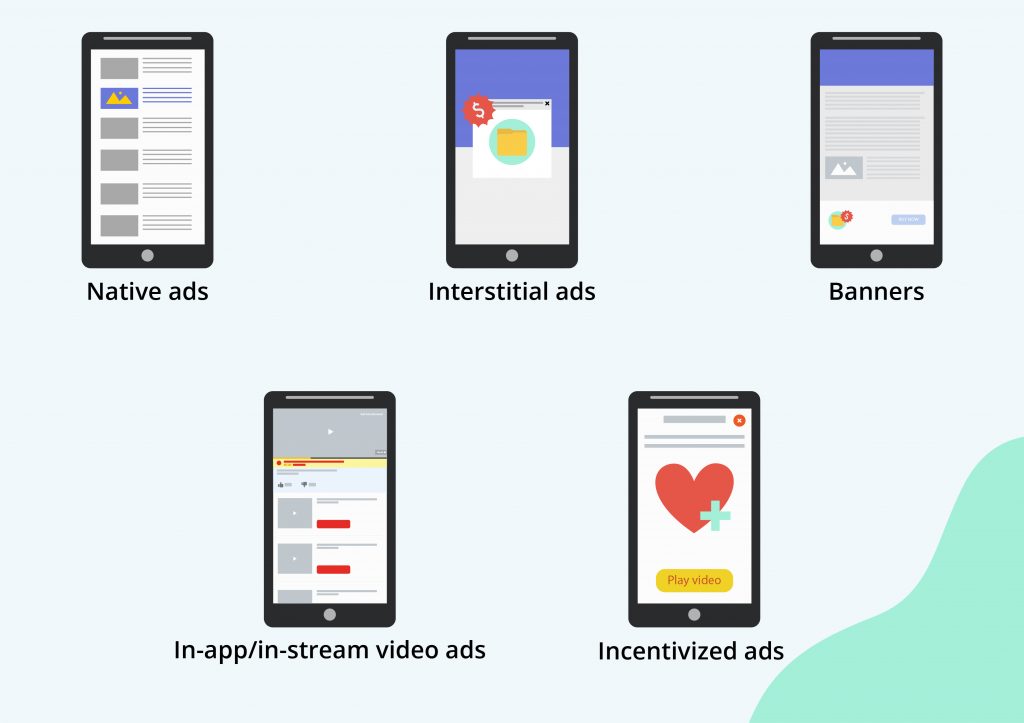
Publishers that include in-app advertising into their monetization strategy are paid every time a consumer sees or interacts with an ad. Among the ad networks that place and pay for advertisements, Google’s AdMob is usually the first to mention. Integrated with Google Analytics, it allows understanding the targeted audience and improving ads. Amazon’s ad system rewards publishers advertising Amazon brands and products per impression. Facebook’s Audience Network allows displaying Facebook’s advertising inside an app with accurate targeting. Apple’s Ad tool facilitates ad integrations that help products to get discovered. Appsfire tries to select ads that blend best with an app’s visual design. Unity targets ads only for gamers and facilitates the monetization of an app’s entire player base. Chartboost offers a Direct Deals Marketplace for easy and successful game monetization and user acquisition.
App revenue depends on the following factors:
- the location of the targeted audience, since, for example, a rewarded video for American users may cost ten times as much as for users based in other countries;
- the product’s popularity, largely dependent on the publisher’s promotion efforts;
- user engagement level, since users should interact with the app frequently to generate enough impressions and ad clicks;
- the platform (iOS ads may be up to 30% more expensive than ads displayed in Android apps);
- the payment model you have selected (more about it in the next chapter);
- the affiliate network company’s pricing.
2. Affiliate income and referral marketing
This model is connected with mobile advertising, and AdMob and other companies above specialize in finding suitable affiliates for mobile apps. Publishers promote a product or display information about an affiliate company through ads or use ‘in-app stores’ to sell the affiliate’s services and products, mostly apps and games. In return, they receive a revenue split based on a cost-per-action (CPA) model.
How much money do apps make per ad? Let’s take a look at the most popular campaigns/payment models used in affiliate marketing:
- CPM (cost-per-impression or cost-per-mille, where ‘mille’ is Latin for ‘thousand’). The advertiser is usually charged every 1,000th time the affiliate ad is displayed. The average payments per 1,000 impressions vary, e.g.:
Banners: $1.20 – $3.00 on iOS and $1.15 – $2.50 in Android apps
Interstitials: $4.00 – $6.00 for iOS and $3.00 – $4.00 for Android
- CPC (cost-per-click). The publisher receives the payment based on the number of clicks on an ad displayed, typically on a CPM basis.
- CPV (cost-per-view). These campaigns are usually applied to video ads. The payment is based on the number of video views or other ad interactionі, such as clicks. The more interactions, the more you are paid.
- CPI (cost-per-install). With this model, the publisher receives payment each time their user installs an advertised product. Chartboost and Playhaven are examples of third-party networks that have the software necessary for this model. The fee ranges from $0.80 to $3.00.
- CPS (cost-per-sale). The publisher receives a fixed commission or percentage of the sale after each completed purchase. Amazon Associates is one of CPS networks. A publisher selects a product to advertise and profits from all redirected purchases and through advertising fees.
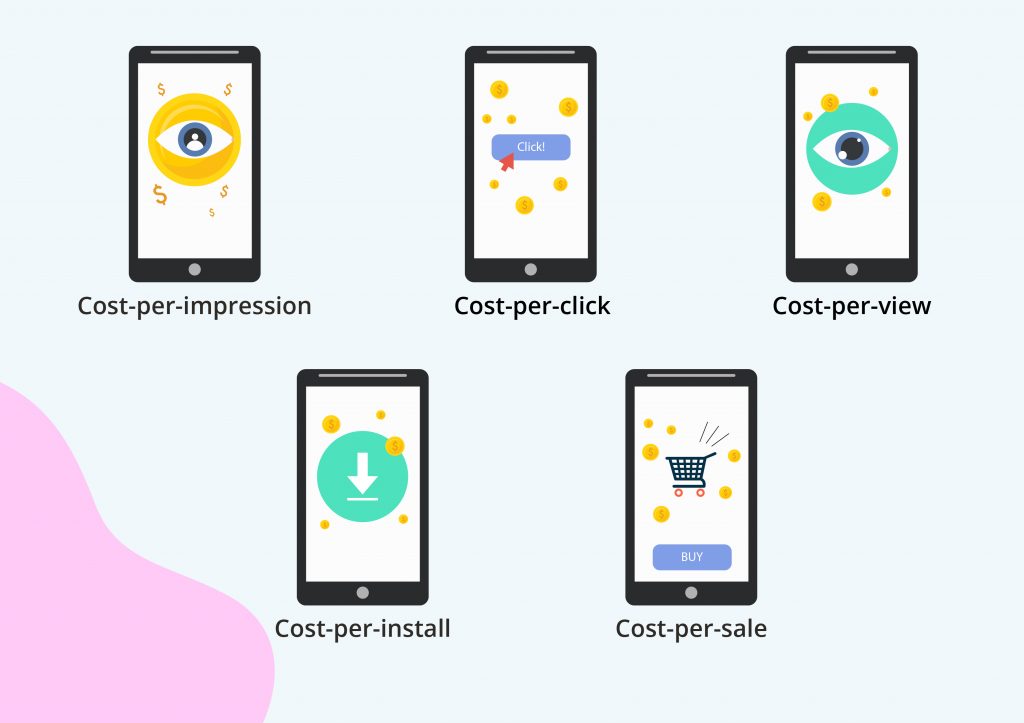
3. In-app purchases
Products with in-app purchases reportedly generate the highest revenue for owners, mostly game publishers. At least 50% of the leading products include in-app purchases. The model requires an integrated payment system, as well as to pay fees to the payment-holding company. The app store manages all transactions, keeping up to 30% commission from each.
Publishers may sell a variety of virtual items directly from their app:
- Consumable virtual products can be purchased and used only once within the app, e.g., power-ups, health points, and extra bonuses. Most games offer virtual currencies called ‘coins,’ ‘gems,’ or ‘gold.’
- Non-consumable products do not expire and remain in permanent usage. For example, users can buy stickers and icons, ads may be blocked, or new game levels unlocked. In an educational app, they might pay to open additional functions or tips.
Subscriptions, which also unlock premium functionality or content for a fee, may be classified as in-app purchases, but are a separate monetization method.
4. Subscriptions
Cloud services, video/audio streaming apps, and digital news portals often employ this model and charge monthly or annual fees. The publisher offers a free version with limited content or features or a free trial period. Consumers who wish to continue enjoying the service or full access can pay a fee and subscribe for a premium account. The desired service or content is available for a limited period according to the chosen subscription plan. Annual news subscriptions or unlimited swipes in dating apps are good examples.
Apple takes 30% of the subscription revenue for the first year and 15% afterward. Google’s commission is 15%, regardless of the year.
Services relying on subscriptions need vast audiences willing to pay for excellent services or content which keeps them engaged. For example, Pandora and mobile versions of the Wall Street Journal and New York Times can boast having both. This monetization model is one of the least used, although some studies showed that subscription-based products earn 50% more money per user compared to other types of in-app purchases, and earn 2-3 times more than those relying on ads or paid downloads.
5. Freemium upsell
The developer creates two versions of the mobile app, light and full. Limiting functionality is the most common freemium model used for both games and non-gaming apps. The product is available free of charge but offers an optional upgrade to access paid/premium features. Consumers use the free light version, and if the product is worth paying to block ads or unlock extra features, they pay for an upgrade through an app store.
15% of apps are reportedly using paid sister apps; the method is popular in the health, training, and educational segments. This tactic helps in gaining lots of new users. The trick is in providing just the right amount of free features in the free version to ensure a proper app experience but induce users to pay for more.
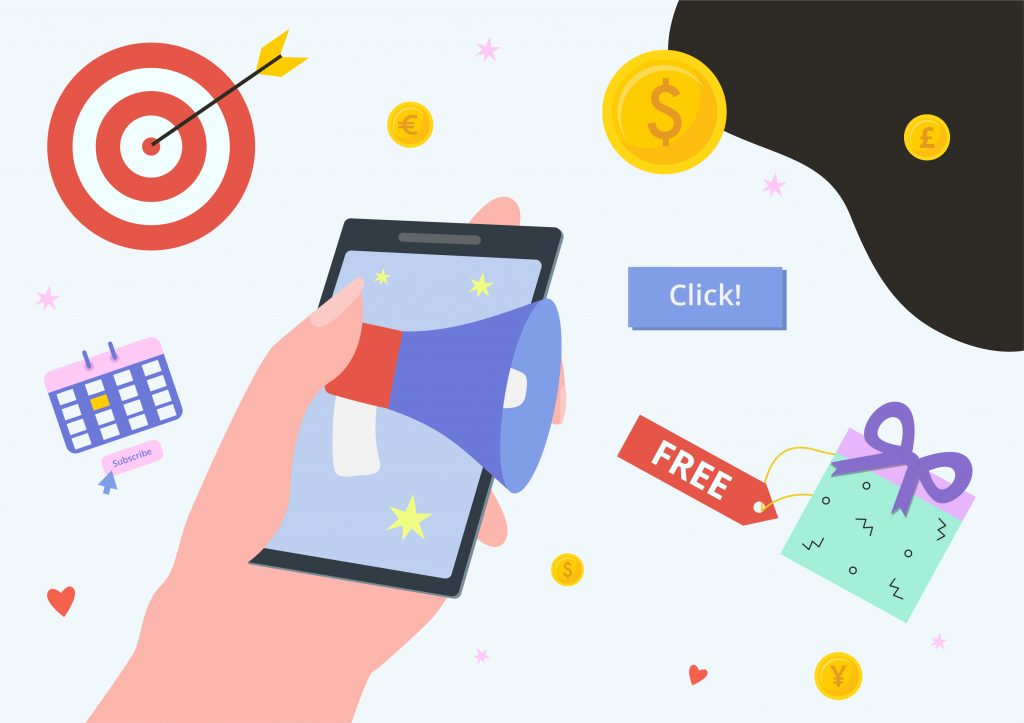
Monetization Methods for Specialized Applications
Sales of goods and merchandise
E-commerce businesses develop mobile applications specifically for selling goods. However, apps of other types may also market and sell branded merchandise like toys, t-shirts, stickers, backpacks, phone cases, etc. This method best suits top apps with large audiences. The mobile game Angry Birds was one of the first to profit through branded merchandise sales.
Merch by Amazon, a self-service program, allows publishers to sell custom branded t-shirts from within their apps. The publisher creates and uploads artwork and promotes it using the Amazon tools. Amazon produces and sells branded t-shirts, handling all payments and delivery, and the publisher receives its royalties.
Transaction fees
This monetization method is available only to those free apps that support regular digital transactions. For example, a travel mobile app enables consumers to purchase travel products from third parties. The owner charges transaction fees for all online purchases.
Sponsorship
Usually, app developers create a product in a specific market niche, and build a substantial user base. Then, they contact a potential sponsor company whose target audience coincides with the product’s targeted audience. If they strike a deal, they white-label the product or update its design, ads, and content to match the sponsor’s brand. Sometimes, they launch an app on behalf of a sponsor organization or brand from the onset. In any case, it’s best to research potential partners before building the product.
There are two types of sponsorship deals: the publisher either splits the revenue generated by the product with the sponsor or receives a monthly sponsorship fee. The strategy also helps to promote the app and expand its user audience, since most sponsors already have good website traffic and loyal consumers.
Crowdfunding
App developers may share their ideas on crowdfunding platforms in search of support for the development and promotion of their project. It is mostly non-gaming apps that receive such funding. It is necessary to convince the funders of the product’s value and idea that is worth investing in. They need to offer a product that solves some of the users’ pain points at no cost.
The following platforms are popular: AppsFunder, Chuffed, Crowd Supply, Crowdfunder, Fundable, Indiegogo, Kickstarter, and Patreon.
Some Final Tips
Among the various ways to make money from free apps, advertising has been and likely remains the most popular. Mobile advertising spending has been booming over the past decade. In 2019, worldwide mobile ad spending amounted to $190 billion and is expected to exceed $280 billion by 2022.
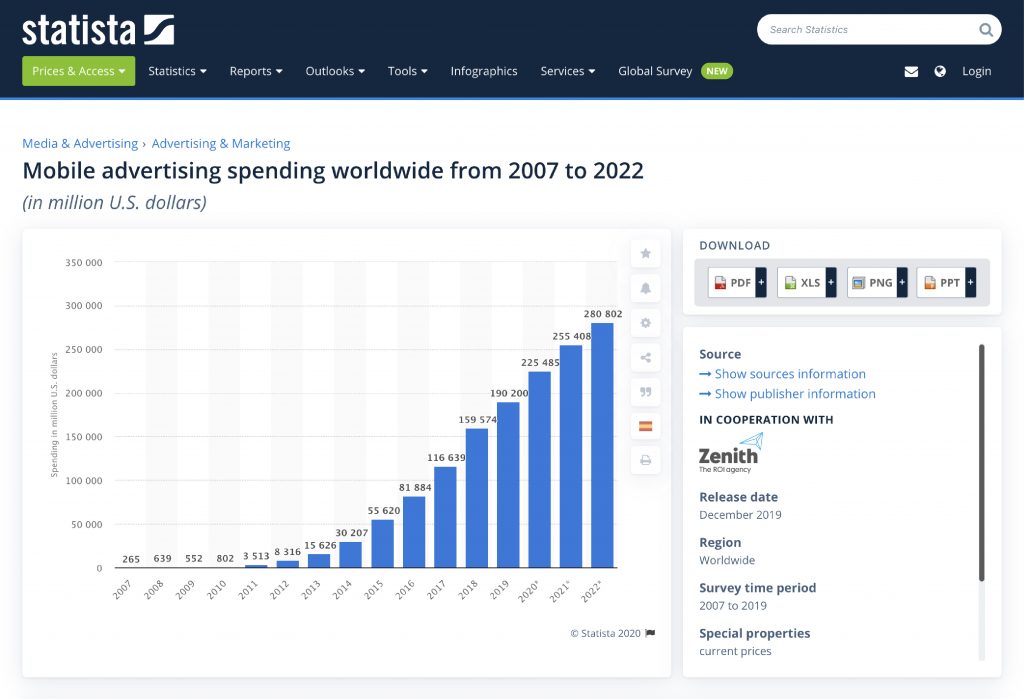
The right selection of ad formats and well-thought-out placement of ads within the app offer better revenue opportunities without jeopardizing user experience. In any case, mobile ads pay well only in apps with large audiences. For a startup, the strategy might not bring in high income all that quickly.
The majority of top-grossing apps combine mobile advertising with in-app purchases for revenue generation. Purchases of in-app resources, subscriptions, and freemium upsell are among the highest-earning monetization methods.
Every method has its limitations, pros, and cons, and there is no one-size-fits-all solution. The trick is in devising the most suitable strategy for your unique product. Here are a few basic tips:
- The monetization plan should align with your product’s business purpose and be relevant to your targeted audience. Only a clear picture of the potential users allows you to tailor the product to their needs. It’s vital to know what delights and what irritates them.
- Since only a small percentage of users will bring you money by interacting with ads or making in-app purchases, it’s critical to attract as many users as possible to increase the odds. Publishers should diligently invest in their app advertising, provide regular updates, and use revenue models that deliver value to users whenever possible.
- It’s essential to conduct market analysis and learn from your competitors’ experiences. Search for similar products and find out what they offer, their UX/UI design, and, more importantly, their monetization methods.
- Any monetization model can profit apps only as long as people use them. If ads or in-app purchases prevent users from enjoying a product, they may abandon it altogether. App developers should select monetization methods that not only return income but also provide users with good app experiences, additional features, and valuable abilities.
However, first and foremost, you need to develop a unique mobile app concept which solves consumers’ problems and turn it into an appealing, useful, and high-performing product. Alternative-spaces’ iOS and Android mobile development teams are here to help!
Content created by our partner, Onix-systems.
 Home
Home